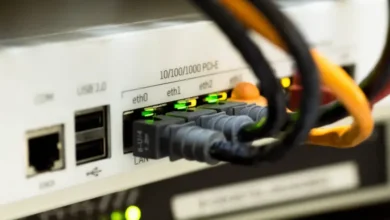Tips for preparing a dynamic and effective online class
Moving the classroom home is not just a matter of turning on the computer and watching a video of the teacher, professionals recommend maintaining interaction and dynamics, to capture the attention of students. Here we give you some tips online class.
Online classes are a modality that has gained relevance in recent weeks. For teachers who had not given their classes in this way, it represents a challenge, since they must keep the attention of the students without being close and knowing the new platforms that offer this service.
The main challenge that teachers present is to prepare the classes and make the explanation of the subject really didactic, to attract the attention of the students and not be distracted by elements that are around them.
“When we are in class it is easy to determine what they are being distracted by or if the content is appearing boring, but when the class is Online Tutoring in Malton it is more difficult because we do not know what the student has next to them that may be catching their attention. Also, being in front of a computer for a long time makes them constantly look at the clock and keep track of time. If we know how to entertain them, none of this will happen and the class will be a success.
Healthy learning environment
For Jared Spataro, corporate vice president for Microsoft 365, the challenge is not only focused on professors, but also on students who are not used to taking classes through a computer, so the teacher must help them with this adaptation.
The professional shares some tips for creating healthy and effective learning environments that allow students to thrive in this new virtual environment.
- Staying healthy and energetic: Learning from home can be a new experience for students. Invite your students to take breaks between lessons to stretch, hydrate, or disconnect from technology at the end of the lesson.
- Stay focused: Find a quiet place where you can focus on the lesson with minimal distractions, both the student and the teacher.
- Motivate your class: Use tools to motivate with fun challenges throughout the week by creating a Fun Activities channel. For example, hold a cooking contest and have students share their creations on the channel. Recognize your students with prizes, and thus inspire more students to participate.
- Bring lessons to life: Make a lesson interactive by enabling Whiteboard in Microsoft’s Teams tool during a live lesson. Allow students to “come up” to the board to solve math problems or to demonstrate their artistic skills, just as they would in a physical classroom.
- Connect with students individually: It can be difficult to measure how students are affected without seeing them in person, so connecting individually is very important. You can support students in a one-on-one chat, and create a safe space for students to ask questions and get the extra help they need.
How to do better classes
We recommends, for teachers who have not given virtual classes, the Decalogue made by researchers at the Open University of Athabasca University with the necessary guidelines to achieve effective learning, since moving the classroom home is not just a matter of turning on the computer and watch a video of the teacher.
Selection of the most suitable system and work tools
They should be aimed at the ages of the students and be able to be used in the devices they already use regularly. It is a good idea to provide tutorials so that everyone, including families, will find it easy to apply.
Student organization
Teachers should help their students to self-organize with advice on the workspace at home, impose a routine to help them or establish mechanisms to identify the beginning and end of each of the activities.
Redesign the course
It is advisable to generate clear work sequences that have a specific duration and that students perceive the teaching accompaniment. For example, with a video at the beginning, a video conference at the end, and a couple of messages during the week. The permanent communication spaces (Telegram channel or a Gmail or WhatsApp group) are also helpful, as well as making sure to always respond to each student.
Develop activities with teaching resources that help students to solve them
Use, whenever possible, images, diagrams or maps to capture the attention of the students and surprise them. Make sure that the activities are divided into short sub-activities (between 10 and 15 minutes) and encourage them to participate.
Create dynamics of active interaction to keep students connected and motivated.
For this, tools can be offered to facilitate collaborative work, such as Google applications. It is also a good idea to design some synchronous situations, the essential ones, if they are short and with very clear objectives.
Explain the evaluation model
Make known the evaluation models, as well as the criteria, if you have an exam scheduled for the next few days. Continuous assessment facilitates the monitoring of students and provides valuable information.
Generate social presence
So that students do not feel alone, they must be made to feel that they are part of a community. Spaces can be created for exchanging messages among students themselves and even among families.
To develop the critical spirit of students regarding technology
It is important that they realize the benefits of using the technologies, but also the risks. For example, analyze fake news.
Take the opportunity to work collaboratively with the closest teachers
Sharing online teaching practices, resources or creating a shared space that everyone has access to will help make Grade 3 EQAO English Tutoring teaching more effective.




